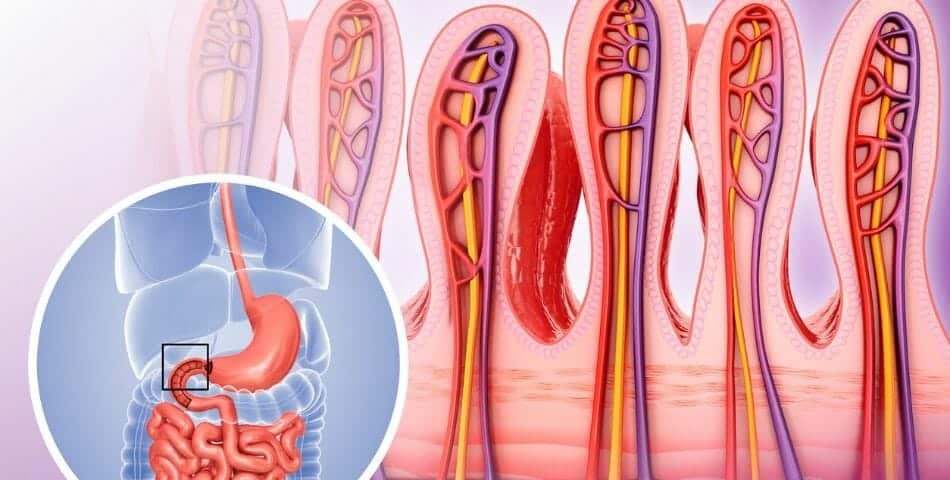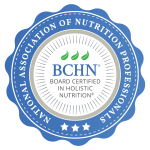How to keep a healthy digestive system and lose 15 pounds of belly fat? Do you wake up with a fairly flat stomach every morning and yet by the evening you feel horribly gassy and bloated? Do you randomly suffer GERD and heartburn?
Have you tried so hard to lose that 15 pounds of unwanted belly fat that hangs around your midriff like an unwanted guest at the dinner table? We are going to take a look at what it really means to have a healthy digestive system.
You may already have tried and failed at Keto diets, metabolic shake diets, lectin free diets, low fodmap, bi phasic, AIP and whole30. Why? Let’s find out.

I have struggled with many of these symptoms myself and am still working on my improving my digestive system. The good news for you is that you can reverse digestive health issues.
It may take support and focused effort but it is really possible.
With the speed of life today, desire for achievement and success, and balancing family life with fast moving businesses as well as finding time for hobbies and self care – no wonder our digestion takes a back seat.
Introducing a deep dive into your healthy digestive system
I am taking a fairly deep dive with you into a healthy digestive system and the key role that it plays in your immunity and functional health. My goal, provided you stick with me until the end, is to help you have a greater understanding of how to keep a healthy digestive system in your busy, oftentimes overwhelming daily life.
By so doing, you will become lighter (lose that 15 pounds of unwanted fat), leaner with more energy, better focus and greater productivity. Interested? I bet you are.
I will cover the different functions and areas of digestion.
Having a greater understanding of the WHY will give insights into your symptoms. I will share tips for what you can actually do about it to improve digestive function and overall digestive health.
Enjoying a healthy digestive system will make you feel calm with less bloating, more energy and no need to focus on every morsel or calorie that passes your lips.
With the advent of antibiotics, we forgot how important it is to support our digestion everyday for disease prevention.
All Diseases begin in the gut.
Hippocrates 2500 years ago
Digestive diseases account for over 100 million ambulatory care visits annually in the U.S. The most commonly reported symptoms are GERD and heartburn, abdominal pain, bloating, diarrhea, and constipation. 1
Interdependence of your health systems
Did you know that every cell in your body relies on your digestive system to provide it with the nutrients needed for structure and function2 ?
If you don’t have healthy digestion, you are just not absorbing the nutrients you need for health. So if something is wrong with your digestive system, it affects every cell in every organ.
Fascinating right? You are a miracle being but this means that if one digestive cog is out of alignment then every digestive cog is out of alignment.
This is the reason for the complexity of your digestive health. But it also accounts for the simplicity of regaining a healthy digestive system if you know how to realign all the cogs in your digestive wheel.
Function of your healthy digestive system

Your digestive tract has 2 primary functions. First is to absorb nutrients but the second is to maintain a healthy immune system. Your digestive tract has a critical role to play in regulating your immune system.
For example, when you suffer food allergies, intolerances, histamine reactions to foods – these are immune responses telling you that your immune system is off balance. Something is out of whack in your digestive tract.
So let’s take a quick road trip through your digestive tract so you have a better understanding of this north-south process.
Food starts its journey in your mouth and this is where so many of us trip up. We eat and drink on the run, at the ballpark, in our cars, at our desks – wherever we can in between important meetings or family commitments.
The journey of your healthy digestive system
Digestion is a north to south process. What do I mean by this? Well digestion actually starts before you even begin eating.
Your senses are lining up to eat through smell, sight, and taste. Have you ever “tasted” a delicious food before you started eating it? I bet you have. Our imaginations are powerful.
This is what drives you to raid the cookie jar or that chocolate bar lurking in your pantry! You salivate about it before you eat it!
Digestion starts in your brain with messages to your digestive organs. These are primitive signals that have existed since our earliest hunter gatherer ancestors.
Signals tell us what foods will bring us pleasure and vital nutrition. Modern day foods are not good sources of vital nutrition so there is a mix up in messaging.
There is a disconnect between our brains and our bodies. This is what we are going to explore here together.
And then there is stress! Who doesn’t struggle with stress? Stress is normal and we are meant to be able to adapt to stress.
However we live in a perpetual state of flight or fight like we are being charged by a saber-toothed tiger all day. Our health doesn’t have the capacity to adapt anymore. It is on full alert permanently.
There’s a reason you get butterflies in your stomach or feel the urge to run to the bathroom when you’re stressed – it’s your brain-gut connection3.
Chewing and mindful eating
How often do you find yourself eating mindlessly? Or eating too quickly because you’ve got to hop on a call or drop the kids at soccer practice?
We just aren’t focused on the job at hand. In fact, we may not even be aware of what we are eating at all. Chewing your food is a fundamental digestive process.
Did you know that carbohydrates are partially digested in your mouth? Think about that next time you eat a high carbohydrate meal. Are you inhaling your food rather than chewing each mouthful 20 times before swallowing?
Your number one eating rule: slow down!

Mindful eating is a daily habit we teach in our individual and group programs. Sounds so basic but frankly, why spend thousands of dollars on fancy health and fitness gadgets if you are not willing to practice the most basic of health fundamentals?
Sometimes we just need to be reminded of what we may not even have been taught as a child. So many families today no longer eat together.
We don’t focus on mealtimes due to our busy overcommitted lives. But even with a busy life, you can practice mindful eating and enjoy healthy digestion.
Parasympathetic nervous system and healthy digestive system
Being in a calm parasympathetic state allows your digestive system to process and absorb what you eat. One simple way to prepare your mind and body to eat is to take 5 deep breaths – in through your nose, out through your mouth – before you begin to eat.
Once you swallow your food, it journeys to your stomach. If your stomach has sufficient acid (a naturally acidic environment), protein will start its digestive breakdown.
Your stomach and healthy digestive system
Your stomach has 3 main functions:
- Disinfect food and stomach tissue
- Digest protein
- Start the process of nutrient absorption

Your stomach is actually a disinfecting pool so if you eat anything that is foreign to your health it should be dissolved by stomach acid. It is a protector for your health.
This is where things can go wrong if your stomach doesn’t have the right balance of acid. There is the possibility of having too little acid or too much acid. Too little is much more common than too much.
GERD and Heartburn
Many people mistakenly think that GERD and heartburn is caused by too much stomach acid because doctors hand out anti-acid medication like candy. What research, as well as my clinical experience, suggest is that low stomach acid is a far more likely cause of these conditions.
With more than 60 million Americans (20% of the population)4 suffering from acid reflux problems more than once a month and 15 million suffering daily from acid reflux problems, you can see why medications for GERD and heartburn are big business.
You can also see how this might be preventing you from having a healthy digestive system.
Stomach acid has 3 components:
- Intrinsic factor – a protein secreted from the stomach that allows your body to absorb Vitamin B12. Lack of intrinsic factor in some people (genetic) can lead to anemia.
- Pepsinogen – an enzyme that breaks down protein.
- Hydrochloric acid – an acid produced by the hormone gastrin when protein arrives in your stomach.
What is hydrochloric acid (HCI)?
Hydrochloric acid (HCl) is needed for proper digestion of macronutrients (carbohydrates, protein and fats) as well as efficient absorption of vitamins and minerals. It also kills the bad bugs like salmonella, E.coli and H. pylori.
You can see why not having enough hydrochloric acid would be a problem, right?
If you don’t eat meat, your stomach won’t know to create enough hydrochloric acid. This can be a big issue when you are not eating meat and then decide to re-introduce animal protein into your diet. You can’t digest protein properly so you will need supplemental help.
This is a key reason to work with a health coach or health professional who is properly trained to support this. Don’t go it alone. Clients generally have trouble fixing stomach acid imbalance without professional help.
Your stomach releases a controlled flow of the mixture of stomach acid and digestive enzymes into the small intestine.
Gallbladder and Bile salts
Bile salts or bile (an area of particular shortage in our modern digestive world) are released into the small intestine for further breakdown of your food.
If you have the following symptoms after a high-fat meal, lack of bile salts or poor bile production may be the issue:
- Burping
- Diarrhea
- Gas
- Pain under your rib cage above the belly button and to the right (liver side)
- Feeling nauseous after eating
Often people with candida, irritable bowel syndrome, SIBO (small intestine bacterial overgrowth) and yeast overgrowth suffer from a lack of bile production.
Here are a few additional symptoms to look out for with bile salts production issues:
- Bumps on the back of your arms
- Skin rash
- Light-colored stool
- Gallbladder attack or gallstones that you know about
- Weight loss
Live Life Well!
Join our email list for exclusive offers and the latest news
We agree to never spam you, by submitting you agree to our Terms of Services
Biles salts and bacterial balance
Bile salts in your gallbladder also regulate the bacterial balance in your digestive system. Did you know that you have 10x more bacteria in your body than cells?
Bacteria are our friends and enemies depending on what bacteria exist and in what quantity. Our immune system is designed to work in harmony with your bacterial balance.
This is actually what keeps our immune system (our army against foreign invaders) working effectively. Bacterial balance affects many parts of our health including metabolism (why you can’t lose weight), mental health and immunity.
When bad bacteria multiply and take over, this is known as gut dysbiosis. Gut dysbiosis can cause many unpleasant symptoms including bloating, gas, distended belly and abdominal pain.
While your small intestine is busy using bile salts to break down fat in the chyme, your pancreas is breaking down all three macronutrients – protein, fat and carbohydrates – for your body.
Pancreas and pancreatic enzymes
If you suffer with burping, gas or bloating after a high-carb meal, it might signal a problem with pancreatic enzymes production.
There are three pancreatic enzymes:
- Proteases and peptidases break down proteins
- Lipases break down fats
- Carbohydrases break down carbohydrates
These pancreatic enzymes are responsible for breaking down the large food molecules into smaller parts so they can move across your small intestine’s gut barrier into your bloodstream.
Carbohydrates are broken down into individual sugars, smaller protein molecules are broken into peptides or individual amino acids, and fats are broken down into glycerol and fatty acids.
Now you are ready to absorb your nutrients through the wall of the small intestine into the bloodstream. What is left is released into your large intestine which reabsorbs water and some minerals and then you pass the rest as bowel movements.
Simple right? NOT. So many parts and pieces that can go wrong!
Small intestine and a healthy digestive system
Your small intestine is really the key to healthy digestion. It is long and convoluted.

Did you know that stretched out, it’s the size of a tennis court?
The intestinal lining in the small intestine is a semi-permeable membrane that acts as a barrier between your inside world and the outside world.
The intestinal wall contains immune cells that are your army of warriors against invading pathogens that don’t belong.
So when your digestion is not working well, these invading pathogens can penetrate the wall of your small intestine and enter your bloodstream. This causes an immune response such as allergies, intolerances and histamine reactions.
Keeping the good stuff in and the bad stuff out is the key to healthy digestion!
Clare Kelway
You’ve heard of leaky gut – what is it?

Leaky gut is an ongoing increase in intestinal permeability that has gained traction in recent years as researchers are learning more about how “holes” in your intestinal lining affect your digestion and overall health.
Your intestinal lining can either be more permeable or actually structurally damaged. This means it is unable to absorb nutrients properly into the bloodstream. It also means that bacteria and other toxins are leaking into your bloodstream that don’t belong there, triggering an immune response.
This causes chaos – 90% of your digestion takes place in your small intestine. Most health issues facing women today include leaky gut to some extent.
Gut lining damage or leaky gut can be a result of:
- Eating the Standard American Diet – low in fiber, high in sugar
- Alcohol consumption
- Stress
- Certain medications like NSAIDS (ibuprofen)
- Imbalance of gut bacteria – too much bad bacteria or displaced bacteria. This means bacteria that belongs in the large intestine has crept into the small intestine causing a condition known as SIBO – small intestine bacterial overgrowth.
- Eating inflammatory foods containing gluten, dairy, soy and night shades (this is bio-individual)
Leaky gut and autoimmunity
Leaky gut is the source of so many health issues including autoimmunity, intestinal inflammation and metabolic diseases such as diabetes and cardiovascular disease.
Visceral fat (that horrible unhealthy fat hanging around your midriff organs) is a direct consequence of leaky gut. You are letting the bad guys proliferate and take over.
So getting the weight down is clearly about reducing inflammation, repairing leaky gut and getting your digestive health back on track. This is what we do in our programs.
How to keep track of your food for a healthy digestive system
A tip for gaining a better understanding of your current digestive issues: use a food and mood journal. If you want to see what we use in the clinic, send us an email and we will send you a copy.
We recommend tracking 4 days out of every 14 days in your food and mood journal and make sure you are tracking at least one weekend day alongside weekdays since your habits and lifestyle tends to change between weekdays and weekends.
Be honest with yourself. It is not about judgement but rather understanding what symptoms might be related. If you want a professional to go through your food and mood journal with you, schedule a digestion analysis call with us and we will help you.
So before we finish here, let’s discuss some digestive therapeutic foods that can actually help you improve your digestion. I recommend you introduce a couple at a time.
Habits are best changed by making small incremental steps rather than giant leaps that lead to inevitable failure due to our ongoing life overwhelm.
Therapeutic foods for your healthy digestive system

Therapeutic foods for your healthy digestive system
- Apple cider vinegar and lemon juice help your upper digestion by changing the pH of your stomach.
- Cabbage juice is helpful if you suffer from GERD or heartburn and has been touted as an ulcer remedy. It contains the form of an amino acid referred to as Vitamin U.
- Celery juice is excellent for healing the stomach. For instance, clients often find drinking celery juice later in the day stimulates digestion, which is naturally poorer as the day progresses.
- Ginger is key for promoting the healing of stomach issues and inhibits the formation of inflammatory compounds.
Therapeutic foods assisting your pancreatic enzymes
- Pineapple contains an important enzyme for your pancreas, bromelain, which helps with protein digestion and may have systemic anti-inflammatory effects. Yikes – what about the sugar content? Remember we are focused on nutrient-dense foods. Nature has wonderful sweet foods eaten in moderation to help your digestion.
- Papaya, if you can find it organic (there is a lot of GMO papaya around), is a wonderful nutrient-dense fruit that is the best plant-based source of digestive enzymes. For instance, don’t you love those trays of papaya at breakfast when you travel to tropical places? Just the thought gets my digestive juices flowing!
Therapeutic foods for bile flow and bile salts production
- Dandelion root is good for your liver and gallbladder because it supports bile flow issues, including gallstones. Dandelion root contains inulin, a type of plant fiber, which promotes the growth of Bifidobacterium and lactobacillus – 2 key groups of probiotics critical for digestive healing.
- Radishes improve bile flow, which is a major “traffic jam” for most Americans. Just be cautious if you think you may have SIBO as radishes are high in sulfur.
- Fennel is a miracle vegetable and should be included in your salads frequently. Fennel is an intestinal antispasmodic (treats cramping) and is truly a healing digestive food. You can eat fennel raw, steamed, baked in stews and soups and can be used instead of celery.
Therapeutic foods for your small intestine health
- Garlic contains allicin, an antiparasitic compound, and keeps those unwanted guests away in your small intestine.
- Fennel is a miracle vegetable and should be included in your salads frequently. Fennel is an intestinal antispasmodic (treats cramping) and is truly a healing digestive food. You can eat it raw, steamed, baked in stews and soups and can be used instead of celery.
- Ginger is key for promoting the healing of stomach issues and inhibits the formation of inflammatory compounds.
- Bone broth, which contains collagen, soothes the digestive tract and supports the integrity of the gut lining.
Therapeutic foods for your large intestine and healthy digestive system
- Okra is very supportive to the large intestine. For instance, the okra “slime” that comes from cutting it is mucilage that is very soothing to your digestive tract. Roasting okra whole on high heat with olive oil will give it a nice crunch and take away the sliminess.
Conclusion
Now that you have journeyed through your digestion, learned the function of your stomach, pancreas, bile production and small intestine, it’s time to implement.
Increase the diversity of your foods. Due to the poor quality of our soils, there is a significant drop in the nutrient value of our vegetables. However despite this, the lack of diversity in our meals is a bigger deal for most of us. This is something we focus on with our clients. If you can increase the diversity of the foods you eat and rotate through the seasons, your digestion will improve.
Eating a nutrient-dense food program, chewing well, eating mindfully, and focusing on this incredible system of health will lead to a healthy digestive system. Reclaiming your digestive health equals good overall health. And a healthy body is one that will release the 15 pounds of unwanted weight!
No matter what valiant efforts you make yourself, it is always easier to work with others to get the results you are seeking. Why don’t you schedule a free digestion analysis call? Let’s guide you to your next healthier steps.
Resources:
- https://www.ncbi.nlm.nih.gov/pmc/articles/PMC6453579/
- NTA 2020 Digestion Student Lecture.
- https://www.health.harvard.edu/diseases-and-conditions/the-gut-brain-connection
- https://magazine.medlineplus.gov/article/heartburn-what-you-need-to-know
Wishing you happiness and health!



